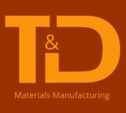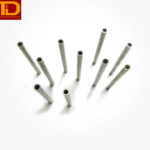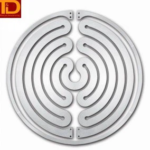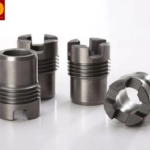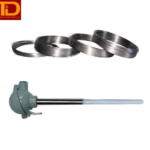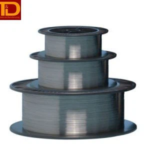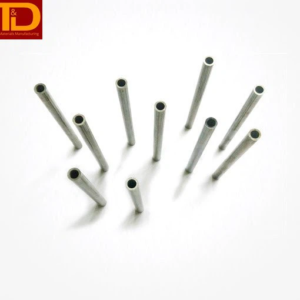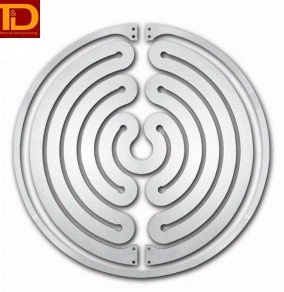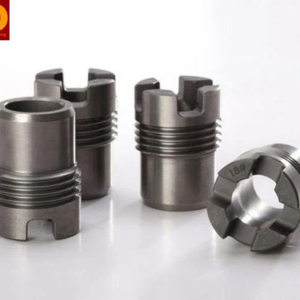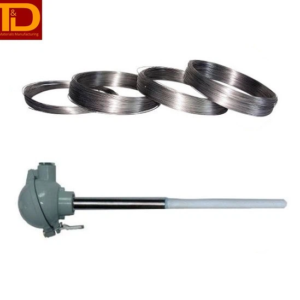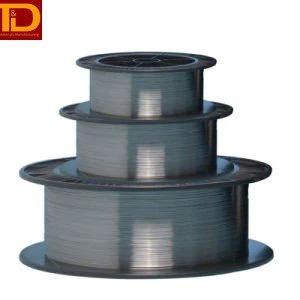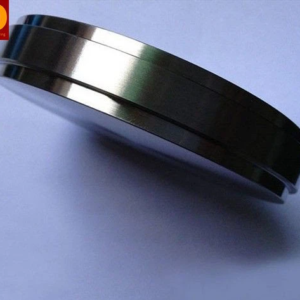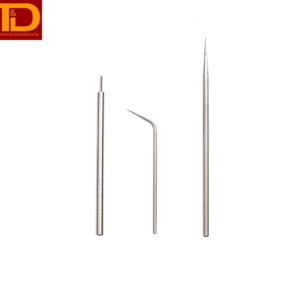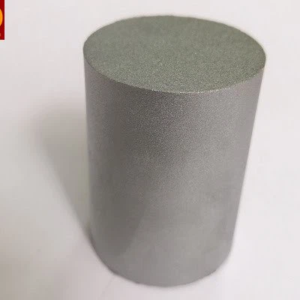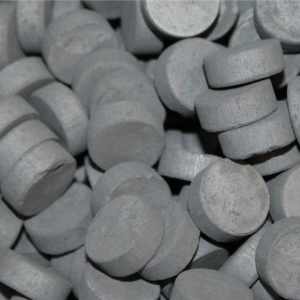Rhenium Alloy
Rhenium alloy refers to a metallic compound composed of rhenium, a rare and dense transition metal. Rhenium is often alloyed with other metals to enhance their mechanical and thermal properties, making it a valuable component in high-performance materials. The versatility of rhenium alloy, coupled with its unique combination of strength, heat resistance, and other desirable characteristics, positions it as a critical material in the pursuit of advanced technologies and high-performance materials across many industries.
3% Rhenium / 97% Tungsten Wire
Disclosed is a tungsten-rhenium filament designed for an operational temperature range of 2900 to 3200°K. This filament incorporates an aluminum-potassium-silicon (AKS) additive and possesses a grain microstructure primarily consisting of elongated interlocking grains with a Grain Aspect Ratio (GAR) of no less than 12. The filament’s rhenium content falls within the range of 0.2-0.4% by weight. Additionally, a manufacturing method for the rhenium-tungsten filament is revealed, involving the preparation of an AKS-doped tungsten-rhenium alloy powder with a rhenium content of 0.2-0.4% by weight. The alloy powder undergoes pressing, pre-sintering, and subsequent sintering with direct current. This process results in the formation of a rhenium-tungsten filament with a metastable crystal structure. The filament undergoes annealing below the recrystallization temperature, followed by recrystallization above the crystallization temperature.
The development of 3% rhenium / 97% tungsten wire stems from an ongoing research initiative initiated in the early 1900s. An early milestone in this research involved the creation of a non-sag grade tungsten wire, employing additives to control grain growth and alter the recrystallized structure. The development of tungsten-rhenium wire aimed to enhance ductility post-recrystallization. By introducing 3% rhenium to non-sag tungsten, a more ductile wire was achieved without compromising any non-sag properties.
T&D employs non-sag tungsten doped with 3% rhenium in several of our products. The incorporation of rhenium enables us to achieve particular performance goals.
Superior Vibration Resistance
Non-sag tungsten wire undergoes secondary recrystallization at temperatures beginning at 2,200°C. However, the introduction of rhenium to non-sag tungsten wire inhibits secondary recrystallization, maintaining a stable fine-grain microstructure even in temperatures up to 2,800°C. This stabilized fine-grain microstructure serves as a sink for absorbing vibrational energy. The damping effect mitigates shock, contributing to prolonged durability under intense vibration conditions.
Improved Ductility
The increased ductility of tungsten-rhenium wire enables greater plastic deformation to alleviate stresses induced by shock or vibrational loading.
Higher Resistivity
The resistivity of tungsten-rhenium wire surpasses that of non-sag tungsten wire and escalates swiftly with temperature. This elevated resistivity provides our designers the flexibility to employ larger wire diameters, a crucial factor in applications prioritizing strength.
Uses Of Tungsten-Rhenium Wire
Tungsten-rhenium wires, distinguished by their distinctive characteristics, have played a significant role across various industries. They find widespread applications, including:
- Incandescent Lamps
- At temperatures ranging from 1,000 to 1,300°C, tungsten-rhenium wire exhibits a hot strength that is 70% higher. Furthermore, its elevated electrical resistivity enables a 10% increase in wire diameter, enhancing filament strength and ductility following annealing. The utilization of this material has enabled lamp designers to significantly prolong the life and reliability of vacuum cleaners, refrigerators, showcases, aircraft, and vending machine lamps, up to five times longer.
- Hot Cathodes In Vacuum Electron Devices
- Tungsten-rhenium wire, utilized in emitter filaments and cathode heaters within X-ray tubes and various vacuum electron devices, enhances the longevity of these filaments and heaters. It mitigates the current climb over their lifespan, diminishes brittleness, and enhances shock resistance.
- Aircraft and Automotive Vehicle Windshields
- The selection of tungsten-rhenium wire for defroster applications in aircraft and automobile windshields is attributed to its ample strength, making it capable of withstanding high-temperature fabrication. Additionally, its higher resistivity compared to other competing materials contributes to its suitability for this purpose.
